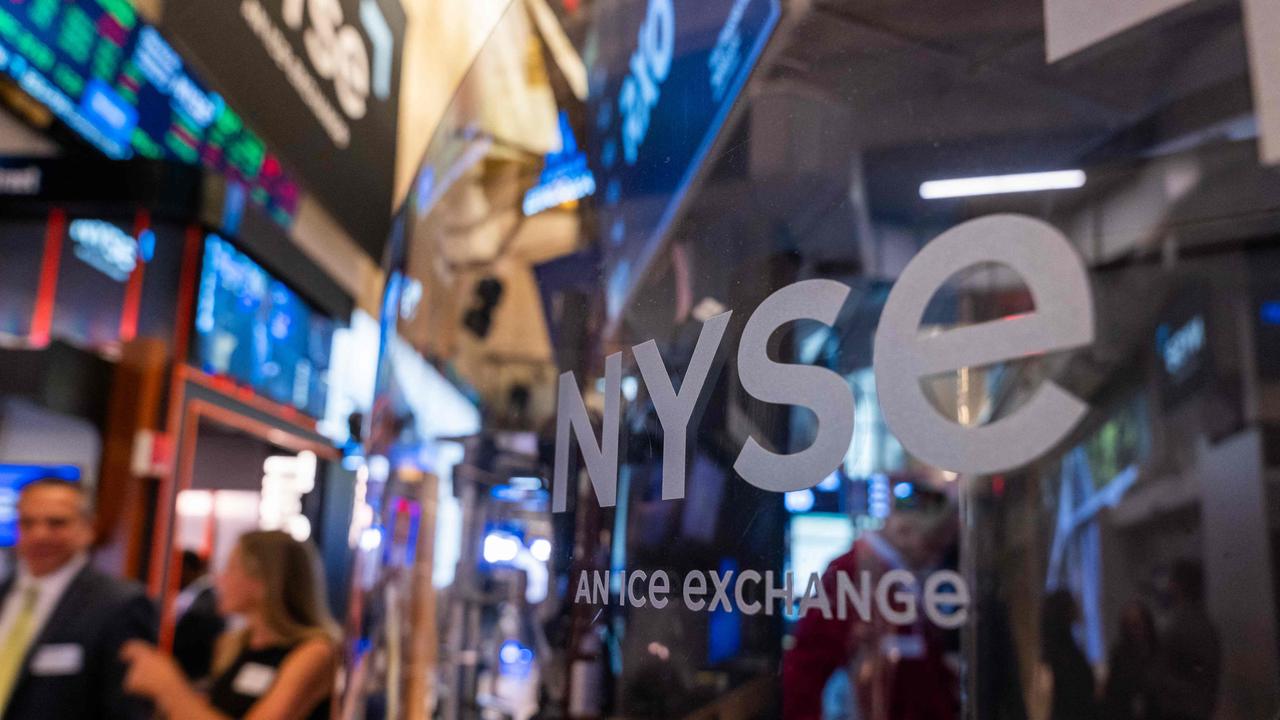Why positive surprises in US data may be a false dawn, Macquarie warns
Recent positive surprises in US economic data may be a false dawn as rising bond yields could drive a renewed downturn by year-end, Macquarie Equities says.

Business
Don't miss out on the headlines from Business. Followed categories will be added to My News.
Stronger than expected US economic data and earnings are driving expectations of no “landing” in the US economy.
That’s boosting stocks, with the S&P 500 up 23 per cent this year.
The benchmark is up six weeks in a row, its longest weekly winning streak since late 2023.
But with the economy faring better than expected since early September, the Federal Reserve is expected to deliver a shallower easing cycle, notwithstanding the fact that it started with an outsized 50 basis point cut in September after surprisingly-weak US manufacturing and employment data for July.
As far as the bulls are concerned, expectations of rapid interest rate cuts have been supplanted by expectations of solid growth and double-digit earnings growth for the S&P 500. But the recent run of positive surprises could be a “false dawn” according to Macquarie Equities
“We suspect the recent run of positive surprises is a ‘false dawn’ and see higher yields driving a new surprise down-cycle by year-end,” said Macquarie’s Australian Equity Strategist, Matthew Brooks.
Economic surprises turned positive in October, reinforcing expectations of ‘no landing’.

A better-than-expected US non-farm payrolls report for September in particular eased labour market worries. Stronger than expected retail sales and initial jobless claims data were the latest positive surprises. From a near two-year low of minus 49 points in early July, Citi’s US Economic Surprise Index has soared to a six-month high of 14.9 points.
At the same time, the Atlanta Fed “GDPNow” GDP forecast soared from 1.55 to 3.43 per cent, implying the US is currently growing well above its “potential” of about 1.8 per cent.
Australia’s labour market has been stronger than expected in recent months, although about 70 per cent of Australia’s jobs growth in the past year has been driven by the “non-market” kind.
But Macquarie warns that rising bond yields could drive a new “surprise down-cycle” by year-end.
“With global monetary easing (excluding Australia for now), plus more fiscal stimulus from China, it increasingly looks like the cycle will re-accelerate aka another ‘no landing’ like early 2024,” Mr Brooks said.
“If this occurs, it should delay the risk of a downturn and more material volatility closer to 2026. The offset here would be rising yields, as markets price fewer cuts, and we continue the yo-yo of market shifts in rate cut/hike expectations seen in recent years.”
Mr Brooks says economic data surprises don’t say much about the economic outlook.
After looking at the relationship between economic surprises and the business cycle – based on the OECD leading indicator for the US – he found that economic surprises versus consensus forecasts fluctuate around the business cycle as the consensus takes time to adapt to the growth path, and this leads to trends in positive and negative surprises before “inevitable reversals.”
Economic surprise cycles are short and sharp – the average “cycle” lasts about six months.
There can be four or five of these in an average business cycle of two-and-a-half years.
Economic surprises start becoming less negative at different times, not solely when the business cycle bottoms.
“False dawns’ during actual economic slowdowns or downturns can give misleading signals,” Mr Brooks said. “Even as the business cycle weakened into the GFC, there were multiple periods of positive surprise before the ultimate bottom, indicating surprises alone aren’t reliable indicators of an improving cycle,” he said. The relationship between economic surprises and bond yields is crucial.”
Positive surprises typically raise bond yields as investors see stronger data, while negative surprises tend to lower bond yields. But a rise in bond yields can cause negative economic surprises.

In the past eight weeks, the benchmark 10-year Treasury yield rose from 3.6 to 4.1 per cent.
This also tightened financial conditions. Bloomberg’s US Financial Conditions Index rose from 0.5 to 0.9 index points. “This ultimately leads to negative surprises and a drop in yields that creates the seeds for improving growth by easing financial conditions again,” Mr Brooks said.
The correlation between bond yields and economic surprises is higher when yields are lagged by three months, suggesting higher bond yields indeed lead to weaker economic growth in the future.
“We think this dynamic will recur, with the spike in bond yields since the Fed cut triggering a surprise down-cycle before the end of 2024 as surprises lag bond yields by about three months,” he said.
But while positive surprises persist, investors may think a US recession has been avoided, much the same as they did in early 2024. The recent surprise upcycle has already bolstered returns, with the ASX 200 up about 8 per cent since the US Economic Surprise Index troughed in early July.
A shift to a surprise down-cycle should dampen returns in the stock market.
They could remain positive as long as lower bond yields support valuations, as is typical in slowdowns, but defensive sectors should outperform as they typically do when sentiment weakens.
“Ultimately, we find ourselves in the position of attempting to participate in the equity markets’ potential near-term upside despite high valuations and already bullish sentiment as there is no clear catalyst for downside and the Fed put (option) is in play,” Mr Brooks said. “For exposure, we still prefer more defensive, quality and growth exposures that tend to outperform after the Fed starts to cut.
“The key risk to our thesis is that the recent surprise trough is not a false dawn, but really is a trough in the cycle. This would result in a third expansion-like phase and push the risk of a downturn phase and more material volatility into late-2025 or 2026.
“In this scenario, cyclicals, value and Financials would likely perform better relative to our current positioning. That said, even in that scenario, it’s hard to get too positive when our FOMO (fear of missing out) Meter suggests equity sentiment in 2024 is the most bullish in decades.”
Originally published as Why positive surprises in US data may be a false dawn, Macquarie warns







